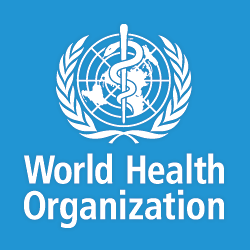
World Health Day 2015 focuses on food safety
The World Health Organisation (WHO) has dedicated World Health Day 2015, which it is celebrating today, 7 April 2015, to highlighting the challenges and opportunities associated with food safety.
The slogan used by WHO for World Health Day 2015 is “From farm to plate, make food safe.”
The WHO said new data on the harm caused by foodborne illnesses underscored the global threats posed by unsafe foods, and the need for “co-ordinated, cross-border action across the entire food chain”.
“Food production has been industrialised and its trade and distribution have been globalised,” said Dr Margaret Chan, WHO Director-General. “These changes introduce multiple new opportunities for food to become contaminated with harmful bacteria, viruses, parasites, or chemicals,” she said.
“A local food safety problem can rapidly become an international emergency,” Dr Chan said. “Investigation of an outbreak of foodborne disease is vastly more complicated when a single plate or package of food contains ingredients from multiple countries,” she said.
Unsafe food can contain harmful bacteria, viruses, parasites or chemical substances, and cause more than 200 diseases – ranging from diarrhoea to cancers. Examples of unsafe food include undercooked foods of animal origin, fruits and vegetables contaminated with faeces, and shellfish containing marine biotoxins.
WHO analysis of global burden of foodborne disease
The WHO has issued the first findings from what is a broader ongoing analysis of the global burden of foodborne diseases. The full results of this research, being undertaken by WHO’s Foodborne Disease Burden Epidemiology Reference Group (FERG), are expected to be released in October 2015.
Some important results are related to enteric infections caused by viruses, bacteria and protozoa that enter the body by ingestion of contaminated food. The initial FERG figures, from 2010, showed that:
- there were an estimated 582 million cases of 22 different foodborne enteric diseases and 351 000 associated deaths;
- the enteric disease agents responsible for most deaths were Salmonella Typhi (52 000 deaths), enteropathogenic E. coli (37 000) and norovirus (35 000);
- the African region recorded the highest disease burden for enteric foodborne disease, followed by South-East Asia;
- over 40 per cent of people suffering from enteric diseases caused by contaminated food were children aged under 5 years.
Cost of food safety issues
Unsafe food also poses major economic risks, especially in a globalised world, according to the WHO. Germany’s 2011 E.coli outbreak reportedly caused US$ 1.3 billion in losses for farmers and industries and US$ 236 million in emergency aid payments to 22 European Union Member States.
However, the WHO said efforts to prevent such emergencies can be strengthened through development of robust food safety systems that drive collective government and public action to safeguard against chemical or microbial contamination of food. Global and national level measures can be taken, including using international platforms, like the joint WHO-FAO International Food Safety Authorities Network (INFOSAN), to ensure effective and rapid communication during food safety emergencies.
Recent Australian food safety scares
Australia has faced several high profile food safety scares in recent times.
In February 2015, Australian food manufacturer Patties Foods recalled several of its frozen berries products after consumption of the berries was linked to an outbreak of hepatitis A cases. In early March 2015, Australian Food News reported that a tuna cannery in Thailand is being investigated by Australian Government authorities after seven people who ate canned tuna at an inner Sydney cafe were stuck down with suspected scombroid poisoning.
In March 2015, Australian Food News reported that the New Zealand dairy industry was facing a poisoning threat — an apparent protest of the use of the poison Sodium monofluoroacetate (1080) in pest control. New Zealand dairy companies, including global dairy giant Fonterra, increased testing of their dairy products as a result of the threat.
Consumer role in food safety
At the consumer end of the food supply chain, the WHO said the public played important roles in promoting food safety, from practising safe food hygiene and learning how to take care when cooking specific foods that may be hazardous (like raw chicken), to reading the labels when buying and preparing food. The WHO said its Five Keys to Safer Food explained the basic principles that each individual should know all over the world to prevent foodborne diseases.
“It often takes a crisis for the collective consciousness on food safety to be stirred and any serious response to be taken,” said Dr Kazuaki Miyagishima, Director of WHO’s Department of Food Safety and Zoonoses. “The impacts on public health and economies can be great. A sustainable response, therefore, is needed that ensures standards, checks and networks are in place to protect against food safety risks,” he said.





